Nobel Reates for high-impact research authors
It should be noted that the diploma has been created specifically for the award winner, that is, the artist who performs it tries to reflect the work and nature of the award winner. The medal is gold and has the same design since 1902. That is, except for the first year the prizes were awarded, everyone else has had the same appearance. However, it has engraved the name of each winner.
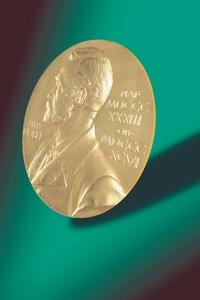
You can write a novel about what happened during World War II with the medals of the three Nobel Prizes in Physics. In those times of politics, science and war more than ever, the German Max von Laue and the Danish James Franck and the Danish Niels Bohr did not want the Nazis to take their medals and lived a multitude of vicissitudes to protect them.
As for money, it has been increasing year after year, although since 2001 there has been no increase. However, one of the award-winning researchers this year has also found it an excessive prize. Yves Chauvin, winner of the Nobel Prize in Chemistry, considers disproportionate the revolt that has occurred in the area since they announced their delivery. It seems good to him to reward the work done, but until now he lived very calm and happy, and the fact of being a Nobel prize has only brought him difficulties.
On the other hand, although the Nobel Prize in Economics and Peace are not supposedly scientific, this year they have much to do with science. So, Economic Robert J. Aumann and Thomas C. It will be collected by Schelling for his contribution to a better understanding of conflict and collaboration through the analysis of game theory. Half of the Nobel Peace Prize has been awarded to the United Nations International Atomic Energy Agency. And the other half, to the director of the agency, Mohamed ElBaradei, who has tried to prevent the military use of atomic energy.
Novel of Physiology or Medicine for those who discovered the origin of gastric ulcer
"Stomach ulcer and duodenum for proving it causes bacteria Helicobacter pylori"
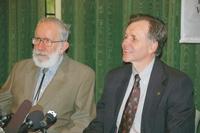
Before finding the bacteria, doctors thought they caused inadequate life and stress. However, in 1982 Marshall and Warren demonstrated that the bacterium Helicobacter pylori is responsible for 80% of stomach ulcers and 90% of duodenum ulcers.
Warren began to discover the culprit of the ulcer. In fact, he was the first to realize that in patients' biopsies there were some bacteria and, when there were bacteria, the stomach mucosa was always increased.
Marshall found these investigations very interesting and since then they have worked together. Marshall achieved the growth of the bacteria in the laboratory and both saw that it was directly related to the ulcer. In fact, the researchers concluded that it was the cause of these diseases. They subsequently called the bacteria Helicobacter pylo.
Bacteria closely linked to man
Helicobacter pylori is a bacterium that lives alone in the human species and is very well adapted to the stomach area. Half of the population has bacteria and although it often does not produce symptoms, 10-15% infected develop the disease.
The bacteria initially infect the lower stomach. It causes an increase in the area and it seems that chronic inflammation increases the production of gastric acid in the upper part. produces. This increases the risk of gastric and duodenal ulcers. In more severe cases, the mucosa bleeds and drills.

In addition, chronic ulcer is related to the risk of developing cancer and a type of lymphoma.
Antibiotics
Warren and Marshall are responsible for making gastric and duodenal ulcers and gastritis medicinal today. Treatment is based on antibiotics and antacids with very good results. However, it is not possible to use antibiotics massively because otherwise there is a high risk of resistance. That is why they are used only to cure patients. However, what was once a chronic disease has become a remedy today.
Studies on Laser, Nobel Prize in Physics
"The coherence of light by describing it through quantum theory" and "by conducting numerous studies related to laser"

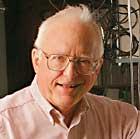

Hall. Born in Denver in 1934, PhD in physics from the Carnegie Technological Institute in Pittsburg in 1961. He worked at the National Institute of Standards and Technology and works as a professor at the University of Colorado.
American Roy Glauber will receive half the prize for describing light coherence through quantum theory. The other half will be received by American John Hall and German Theodor Hänsch. His research is related to a wide field of laser application: laser spectroscopy.
Coherent rays
A bulb, when lit, emits many rays of light. These rays are different in color and intensity and are not in phase. This is because several parts of the bulb thread emit rays in different conditions. The light we see is the sum of all those rays, and that is why we find
it “white”. Lasers emit monocolor light, which means the electromagnetic waves of all rays have the same frequency. (In theory there is no perfect laser, but if it had emitted a single color light).
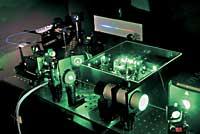
The laser emits rays in a controlled way, stimulating a chemical, so the rays it emits are coherent. This means that the waves of all these rays are in phase and never annulled.
Roy Glauber gave a theoretical explanation of this feature in articles published in 1963, based on quantum mechanics. Somehow, he developed one of the foundations of quantum optics theory. Galuber was not the first to try to make this description, but he did make a proper description. That is why this year you will be awarded the Nobel Prize.
Spectroscopy
Consistent light, laser, has been used in many applications. One of them has a lot to do with substance analysis. In short, when attacked with light, atoms and molecules emit their own light. Therefore, the type of light emitted by a substance when radiated can determine which atoms are part of it.
Obviously, the accuracy of the analysis depends on this initial light; if laser is used, a very precise analysis can be performed.
American John Hall and German Theodor Hänsch investigated laser spectroscopy and developed a 'optical frequency combing technique' to maximize the accuracy of the method.
Nobel Prize in Chemistry for metatesis reactions in organic synthesis
"For his work in the development of the method
of metaphor" (Metatesis is a method used in organic chemistry for the creation of new compounds)
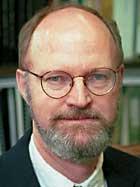


French. Born on October 10, 1930. He has dedicated his professional life to research in petroleum chemistry, currently honorary director of the French Petroleum Institute. He has made important contributions in this field, although he will receive the Nobel Prize in Chemistry for a contribution to organic synthesis. He lives in the city of Tours.
The aim of organic synthesis is to generate complex molecules in the laboratory from simpler ones. In general, these molecules have basic carbon structures and their synthesis is a construction like a mecano. To form complex molecules it is necessary to build the structure piece by piece, both the carbon base and all neighboring atoms.
This mechanical work is usually a pure strategy, since you cannot associate any molecule in any way with any other, you must follow the rules of chemical reactions. Yves Chauvin, Robert H. Grubbs and Richard R. The Schrock chemists developed a type of reaction - which in their day facilitated this mechanical strategy - so they will be awarded the Nobel Prize in Chemistry. This type of reaction is called a metaphor.
To understand this reaction it is possible to compare organic chemistry with language. In short, as far as language is concerned, metatesis consists in the displacement of the internal phonemes of a word (for example, it is about making cloud hedoi). Well, as far as organic synthesis is concerned, it is also called metaphysics to change atomic groups from one place to another, within an organic molecule or from one molecule to another.
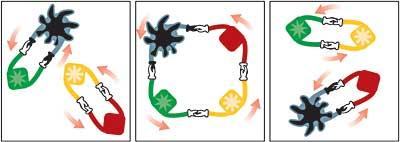
In this path of synthesis the carbons with double bonds intervene; after the reaction, the carbons that were not united remain united and two that were united are released. As in a single step, a very useful reaction occurs in the strategy of building molecules. Of course, catalysts are essential to start the reaction.
Metatesis began to be used as a method of synthesis in the 1950s, but until 1971 they did not know how the reaction occurred. Chauvin explained the reaction pathway of metatesis. And he explained what metals play as catalysts and how.
An adequate catalyst is fundamental in this path of synthesis. Therefore, after Chauvin's work, many chemists sought efficient catalysts. As the first effective catalyst, a metal compound, was obtained by Schrock in 1990. And, two years later, Grubbs achieved an even more efficient, air-stable catalyst unlike the previous one.
Buletina
Bidali zure helbide elektronikoa eta jaso asteroko buletina zure sarrera-ontzian











